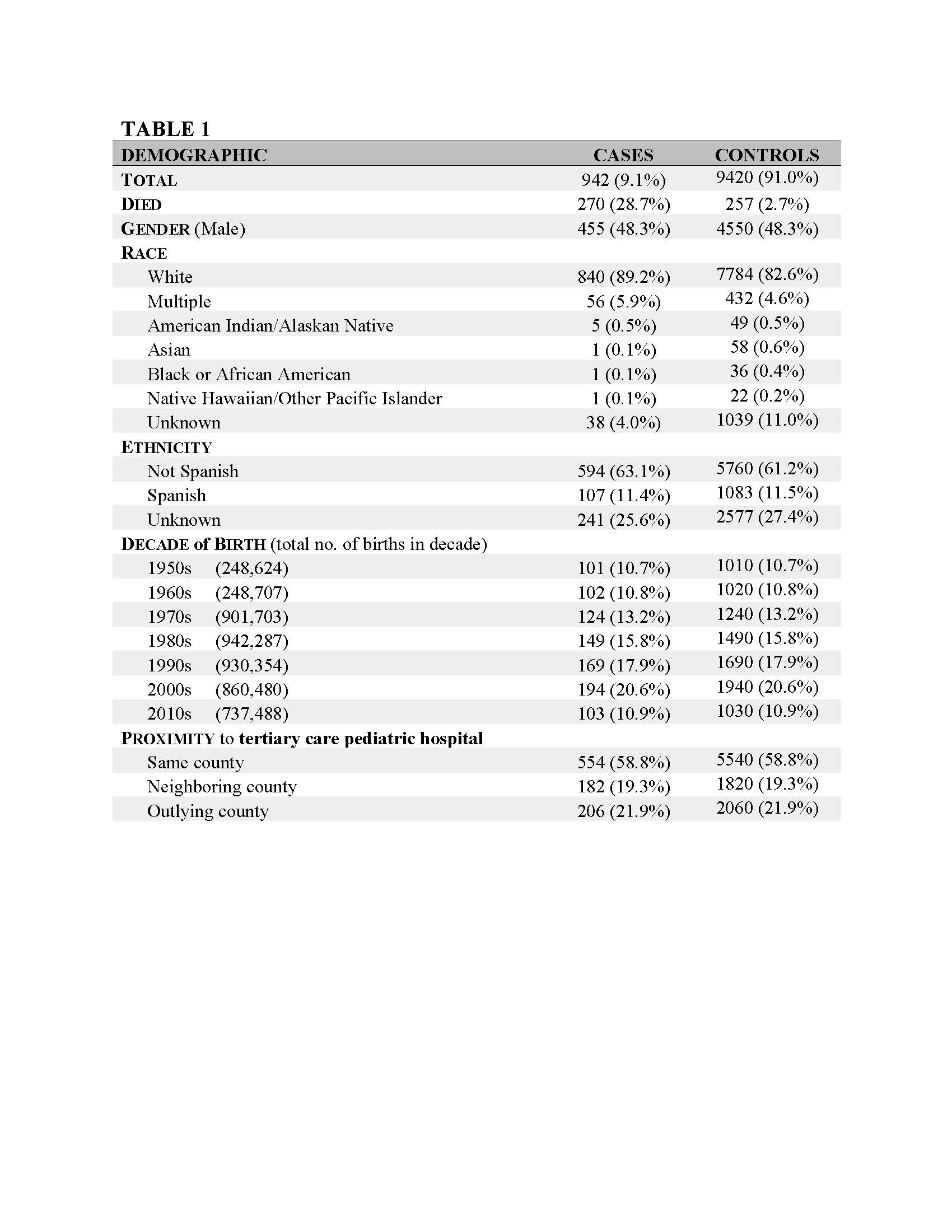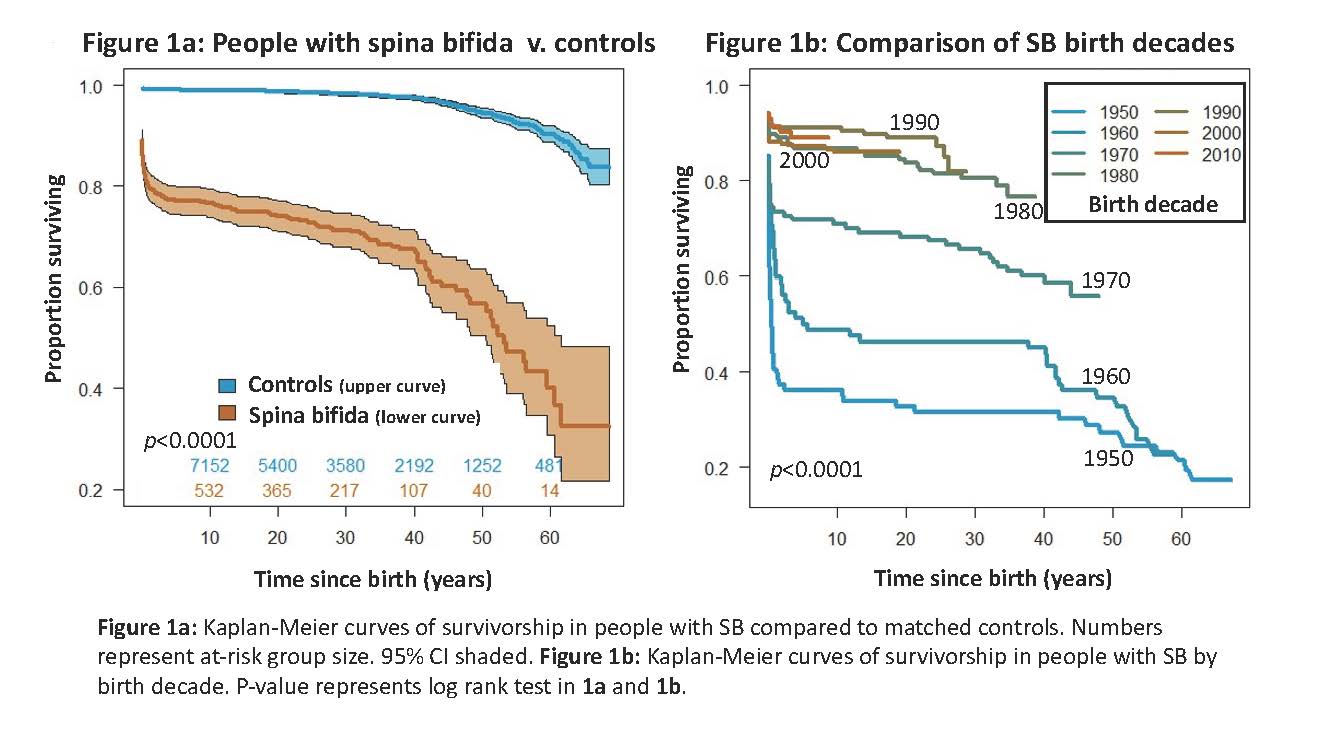Back
Poster, Podium & Video Sessions
Moderated Poster
MP11: Pediatric Urology: Neurogenic Bladder, Reconstruction & Urologic Emergencies
MP11-09: Survival analysis among Utah residents with spina bifida born between 1950 and 2015
Friday, May 13, 2022
1:00 PM – 2:15 PM
Location: Room 225
Cynthia Sharadin*, Suzanne Lange, JJ Horns, Chad Wallis, Glen Lau, Anthony Schaeffer, Salt Lake City, UT
- CS
Cynthia Sharadin, MD
University of Utah Health
Poster Presenter(s)
Introduction: Life expectancy for people with spina bifida (PSB) is believed to have increased over the last 50 years. This study compares the risk of death between PSB and controls and assesses whether survival among PSB has changed between 1950 and 2015.
Methods: Study design: case control
Data source: Utah Population Database (UPDB) – merges data from birth and death records, the state’s two major health systems, and other sources; captures over 85% of Utahns.
Cases: SB listed on birth certificate or SB ICD9 code(s) appearing in the medical record; born between 1/1950 and 12/2015.
Controls: 10:1 matching on gender, county at and year of birth.
Statistics: Cox proportional hazards models to 1a) compare risk of death between PSB and controls and 1b) test whether risk of death differed between birth decades within the SB population only. Kaplan-Meier (K-M) curves depict each survival function.
Results: The study includes 942 cases and 9420 controls (Table 1). 270 (29%) cases died.
After controlling for gender and county, PSB were found to have a 17-fold increased risk of death compared to controls (HR 16.9, 95% CI [14.1,20.1]; Figure 1a) irrespective of birth decade.
When comparing the risk of death among PSB, after controlling for gender and county, PSB born in the 1970s and 1990s had a 55% (HR 0.45, 95% CI [0.31,0.66]) and 84% (HR 0.16, 95% CI [0.10,0.27]) decreased risk of death, respectively, relative to PSB born in the 1950s. There was no difference in risk of death between genders or when considering county.
The K-M curve shows that infant mortality decreased substantially starting in the 1980s, and the proportion of PSB living through their 30th birthday increased substantially over time (from ~30% if born in the 1950s to ~85% if born in the 1980s or -90s) (Figure 1b).
Conclusions: There have been major improvements in infant mortality and overall life expectancy for PSB in Utah over the last 70 years. This could be due to improvements in prenatal detection or neonatal intensive care, or developments in neurosurgical, urologic, and other medical care.
Source of Funding: Dr. Schaeffer is supported by K08DK119535.


Methods: Study design: case control
Data source: Utah Population Database (UPDB) – merges data from birth and death records, the state’s two major health systems, and other sources; captures over 85% of Utahns.
Cases: SB listed on birth certificate or SB ICD9 code(s) appearing in the medical record; born between 1/1950 and 12/2015.
Controls: 10:1 matching on gender, county at and year of birth.
Statistics: Cox proportional hazards models to 1a) compare risk of death between PSB and controls and 1b) test whether risk of death differed between birth decades within the SB population only. Kaplan-Meier (K-M) curves depict each survival function.
Results: The study includes 942 cases and 9420 controls (Table 1). 270 (29%) cases died.
After controlling for gender and county, PSB were found to have a 17-fold increased risk of death compared to controls (HR 16.9, 95% CI [14.1,20.1]; Figure 1a) irrespective of birth decade.
When comparing the risk of death among PSB, after controlling for gender and county, PSB born in the 1970s and 1990s had a 55% (HR 0.45, 95% CI [0.31,0.66]) and 84% (HR 0.16, 95% CI [0.10,0.27]) decreased risk of death, respectively, relative to PSB born in the 1950s. There was no difference in risk of death between genders or when considering county.
The K-M curve shows that infant mortality decreased substantially starting in the 1980s, and the proportion of PSB living through their 30th birthday increased substantially over time (from ~30% if born in the 1950s to ~85% if born in the 1980s or -90s) (Figure 1b).
Conclusions: There have been major improvements in infant mortality and overall life expectancy for PSB in Utah over the last 70 years. This could be due to improvements in prenatal detection or neonatal intensive care, or developments in neurosurgical, urologic, and other medical care.
Source of Funding: Dr. Schaeffer is supported by K08DK119535.



.jpg)
.jpg)